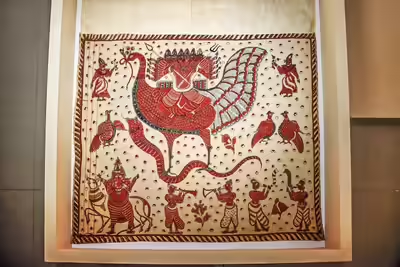Bengaluru, a city renowned for its unique blend of modernity and tradition, has long been a center for art, culture, and history. As one of India’s foremost cultural hubs, the city is home to a rich array of museums, galleries, and cultural institutions that celebrate the country’s diverse heritage while embracing contemporary creativity. Among these cultural treasures is the Museum of Art and Photography, which is currently hosting the exhibition Chay Reds, Ferrous Black. The showcase offers an insightful look into the untold stories of Indian trade—particularly in textiles—and its profound impact on the cultural fabric of Sri Lanka.
Chay Reds, Ferrous Black highlights the deep historical and cultural ties between India and Sri Lanka, focusing particularly on the textile exchanges between the two nations. The exhibition traces the ancient trade routes that not only facilitated the movement of goods but also the exchange of artistic and cultural traditions. Indian textiles—such as handwoven silks and intricate cotton fabrics—found their way into Sri Lankan traditions, where they evolved and merged with local customs and practices. These textiles carried more than just material value; they embodied the ethos, beliefs, and artistic sensibilities of India, slowly integrating into the daily lives of Sri Lankans and creating a unique blend of cultural identity.
India’s influence on Sri Lanka’s textile industry is both profound and enduring. Over centuries, Indian artisans, traders, and cultural emissaries introduced new weaving techniques, dyeing methods, and textile motifs to Sri Lanka. The textiles reflect the artistic qualities of the Indian subcontinent, while Sri Lankan artisans incorporated their own designs and symbolism into the fabrics. Local motifs, including figures of peacocks, elephants, and tigers, began to appear on these textiles, creating a beautiful fusion of Indian aesthetics and Sri Lankan imagery.







